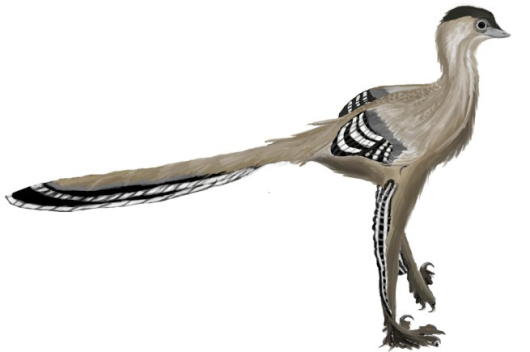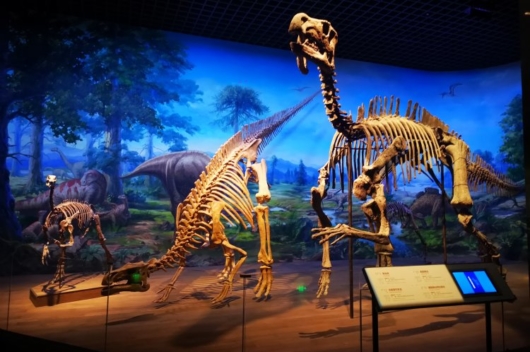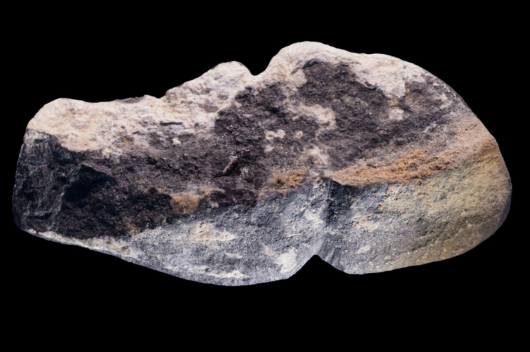For more than 150 million years, amazing dinosaur species in every shape and size filled Earth’s habitats. The newly named species, described Thursday in Communications Biology, was not a saurian giant. The small swimmer was only about a foot long and lived in prehistoric Mongolia about 71 million years ago. Despite being a cousin of sharp-toothed predators such as Velociraptor, the new dinosaur had a very different, streamlined look and long jaws fully of tiny teeth. Seoul National University paleontologist Sungjin Lee and colleagues have named the dinosaur Natovenator polydontus, the “many-toothed swimming hunter.”
The new dinosaur was found in the Gobi Desert at a place called Hermiin Tsav, famous among paleontologists for preserving multiple dinosaur species and other forms of ancient life.
Careful preparation of the dinosaur’s bones was required before the strange nature of this new species became apparent. After the bones were exposed, Lee says, “we realized that this was something special, because it was beautifully preserved with a nice skull and an extremely long neck.” As the experts looked closer, the fossil seemed to share some traits with another species, Halszkaraptor, that was named in 2017 and initially interpreted as a swimming dinosaur. The hypothesis generated a great deal of debate, however, and so Lee and co-authors scrutinized the bones of Natovenator carefully. In the end, the researchers determined, Natovenator was a swimmer. “We think it looked like a Cretaceous cormorant,” Lee notes.
Naturally, paleontologists are many millions of years too late to watch Natovenator in life and observe what a dinosaur stroke might look like. Paleontologists will have to dig in further to ascertain how the dinosaur’s anatomy translates to the animal’s behavior. “In spite of evidence that is not entirely conclusive, I think that some anatomical details of Natovenator are good indicators that the animal was probably aquatic,” says Argentine Natural Science Museum paleontologist Federico Agnolin, who was not involved in the new study.
The long jaws and many tiny teeth of Natovenator could be an adaptation to snatching small, slippery or wriggling prey from the water. More than that, Lee and co-authors note, the preserved ribs of Natovenator are oriented in a swept-back fashion similar to that of penguins and auks. The arrangement appears to be a form of skeletal streamlining that would have allowed Natovenator to swim more efficiently in Cretaceous lakes and streams. Such streamlining has not yet been seen in any other dinosaur species.
Of course, there is existing evidence that some dinosaurs swam now and then. Deep scratches in muddy sediment made by other dinosaurs have been found at various places around the world from time periods millions of years apart. Most of the time these tracks were made by theropod dinosaurs as they crossed rivers or waded out into the shallows in search of a fish dinner. The great sail-baked dinosaur Spinosaurus, too, has been interpreted as being more aquatic than most other species. Debate remains about whether Spinosaurus was a skilled swimmer or even hunted prey while wholly submerged, but the dense bones of the dinosaur and its croc-like jaws hint that the immense predator was at least wading around in the shallows in search of a lungfish or coelacanth to eat. But Natovenator is distinct from these earlier examples, because it appears to have specific adaptations related to moving through the water.
Future biomechanical studies will surely test how Natovenator and related species moved around their Cretaceous habitats. Studies of geochemical clues in the dinosaur’s teeth and bones, too, will likely confirm or challenge the idea that Natovenator was as aquatically adept as supposed. For the moment, though, paleontologists are hard-pressed to look at this dinosaur and not see a preview of what penguins and auks would later evolve on their own.
Natovenator almost certainly won’t be the last dinosaur to raise such aquatic possibilities. The seeming absence of swimming dinosaurs has more to do with the nature of discovery and the incomplete nature of the fossil record than anything else. Over a thousand dinosaur species have been named, Agnolin points out, of various body types, habitat preferences and other distinguishing details. Paleontologists are still discovering more, but even familiar species might turn out to have unexpected life histories. “I think that detailed studies of already-known dinosaurs,” Agnolin says, “will result in the discovery of swimming adaptations in several unsuspected species.” (source: smithsonianmag)
 3,575.44
3,575.44












Related News